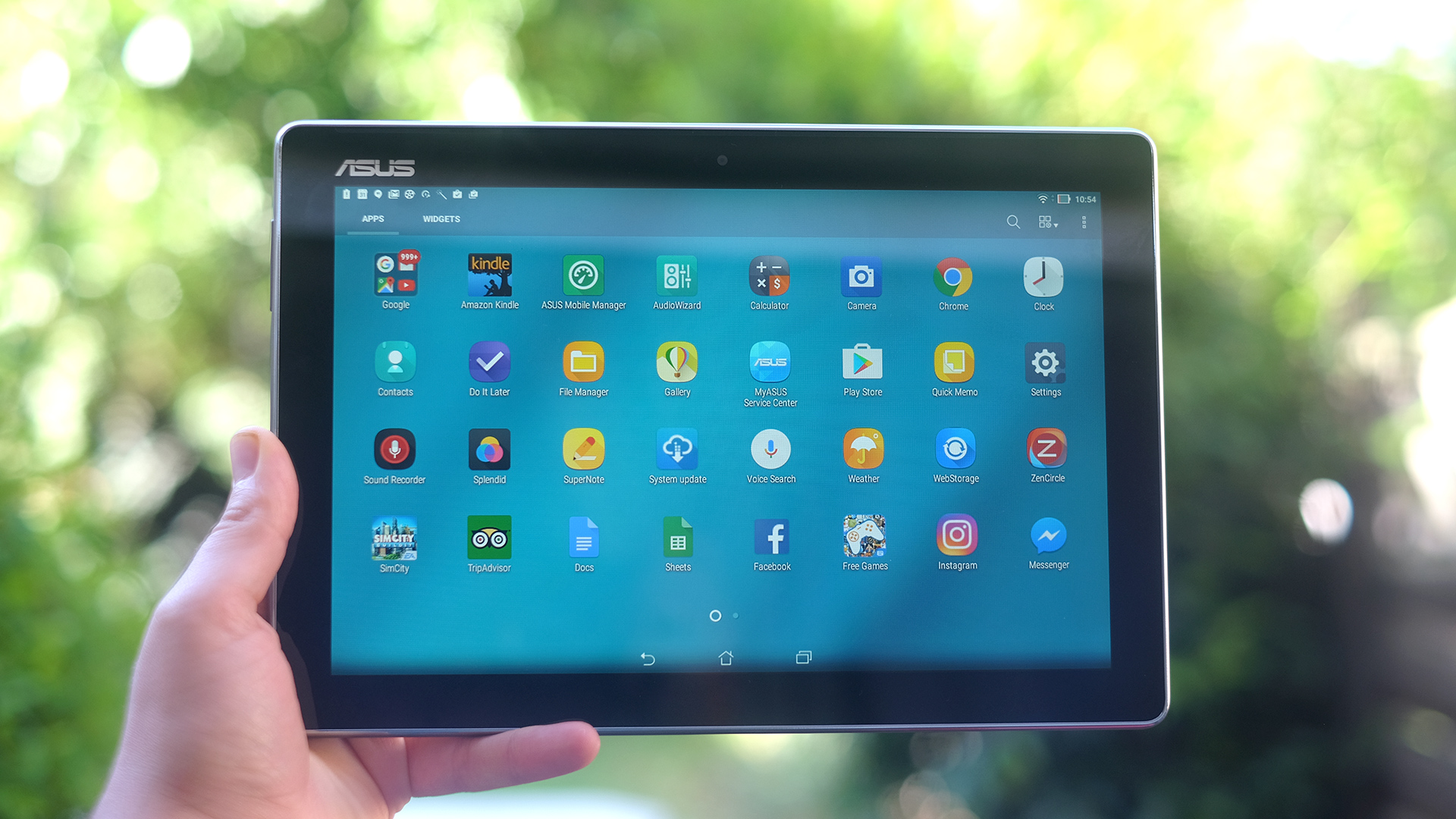TechRadar Verdict
Asus beats several competitors for value and display quality, but real gadget fans may want to spend a little more on a tablet with a higher resolution screen, as the ZenPad Z300M leaves the interface and games looking overly pixelated.
Pros
- +
Low price
- +
Good display color and contrast
- +
Respectable gaming and general performance
Cons
- -
Unremarkable battery life
- -
Very low screen resolution
- -
Obvious plastic feel
Why you can trust TechRadar
The Asus ZenPad 10 Z300M is a cheap tablet, but exactly how cheap depends on whether you buy it with a keyboard or not. Asus sent us the keyboard-free "solus" version, letting us really get to grips with whether the filling of this sandwich is any good.
The slate costs $179/£149 (roughly AU$240) without the keyboard and around $200/£180/AU$265 with it. Given the high prices you pay for just the keyboard of tablets like the iPad Pro 9.7 and Microsoft Surface Pro 4, the ZenPad seems an obvious bargain hunter pick.
The Asus ZenPad 10 Z300M is severely held back by the same show-stopper that affects similarly-priced Amazon and LG devices, though: the screen resolution is just too damn low. So does the ZenPad 10 Z300M have enough else going for it to overcome its resolution limitations? We answer that below.
Key features and design
- Big screen at a low price
- Plain design but solidly built
The Asus ZenPad 10 Z300M has a 10.1-inch screen, so it's not a super-portable tablet, but combined with the low price of $179/£149 (around AU$240) that big screen is one of the slate's main selling points, since most cheap tablets have just 7 or 8-inch displays. We'll talk about this in more detail in the screen section below, but know that while the size of the screen is impressive, the resolution isn't.
As for design, it's harder to make a tablet stand out than a phone. Make an orange or green phone and people will think it's funky and refreshing. Make an orange tablet and they'll say A) it's for kids or B) you've lost your mind.
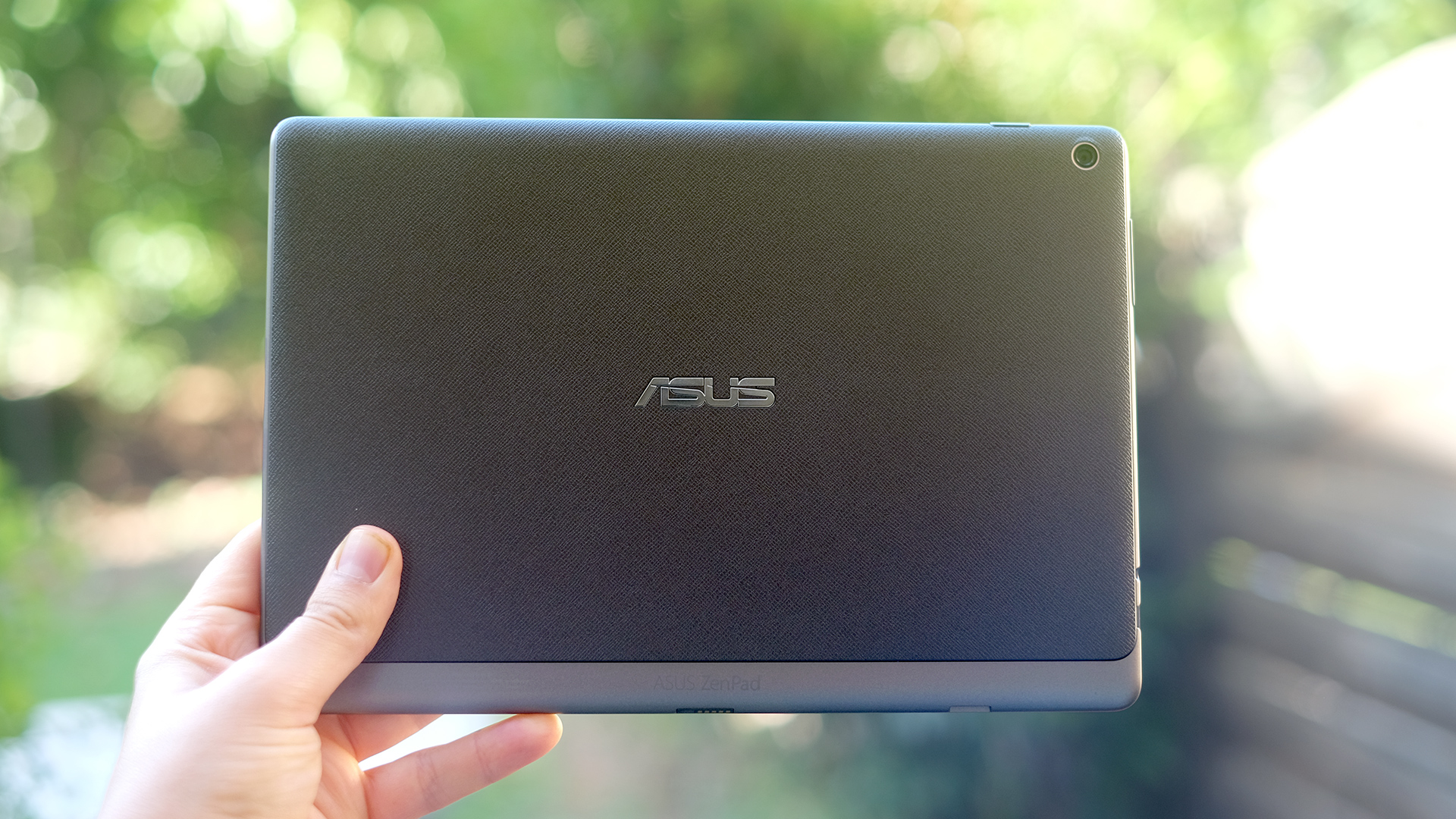
Asus worked out its own subtle tablet style a few years ago, and even though this is a bargain basement tablet, the Asus ZenPad 10 Z300M tries to look premium, with a back that mostly tries to look like leather, while the bottom section gives the appearance of aluminum.
It's just an effect of course, the lot is plastic, and not the sort of plastic with a soft touch finish or one that feels like another material. You get a high-friction texture, but that's it.
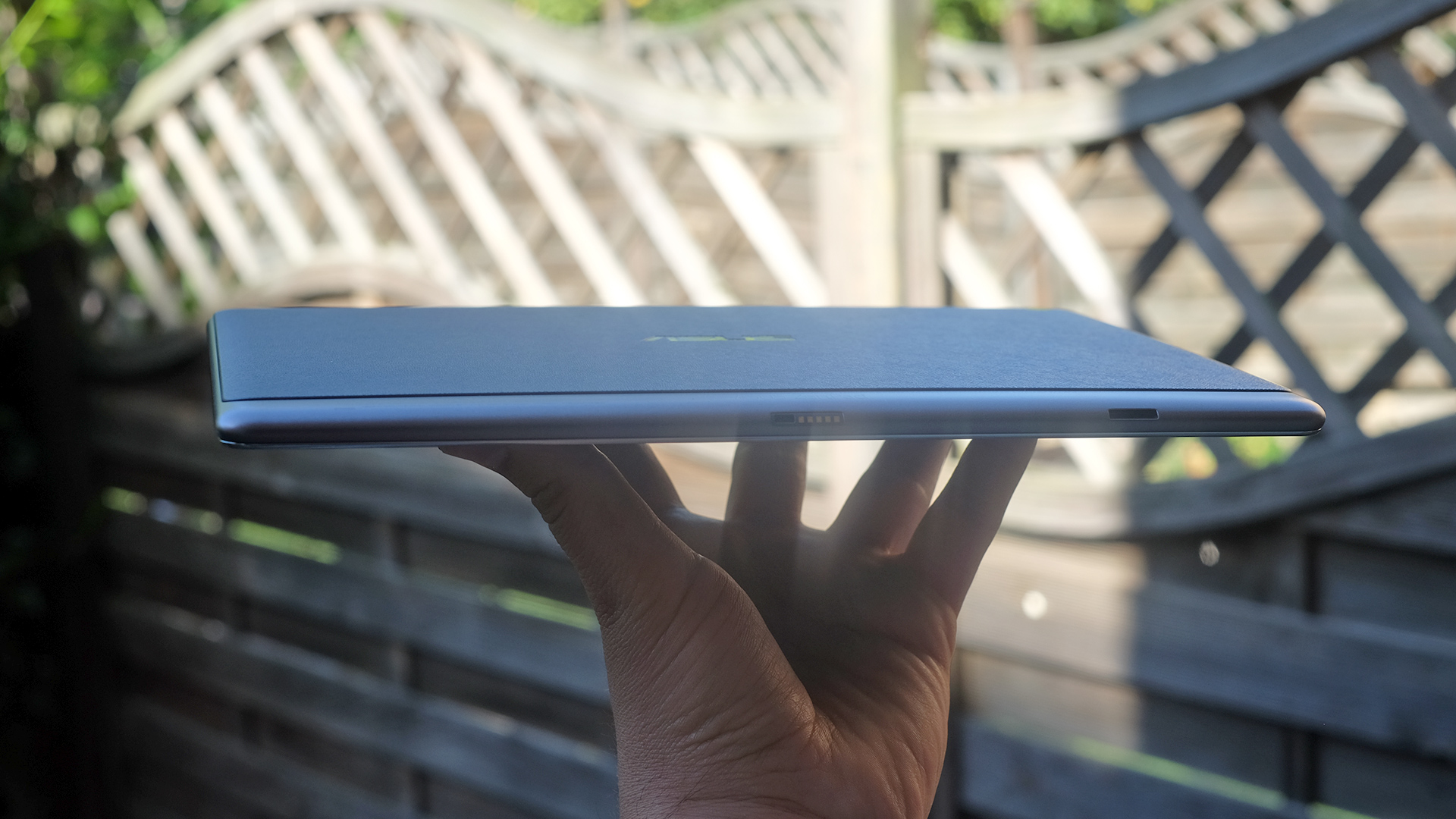
Being just 7.9mm thick is neat but no longer anything to get too excited about - aren't we spoilt - and at 490g the ZenPad 10 Z300M is a bit heavy to try to carry around in one hand.
That a tablet this price feels basic is no revelation, the Asus ZenPad 10 Z300M does feel well-made, though. It doesn't flex under hand pressure more than a tablet twice the price, its screen is covered by toughened glass, and there are no wide seams that would suggest the slate's build quality is markedly worse than Asus's other gear.
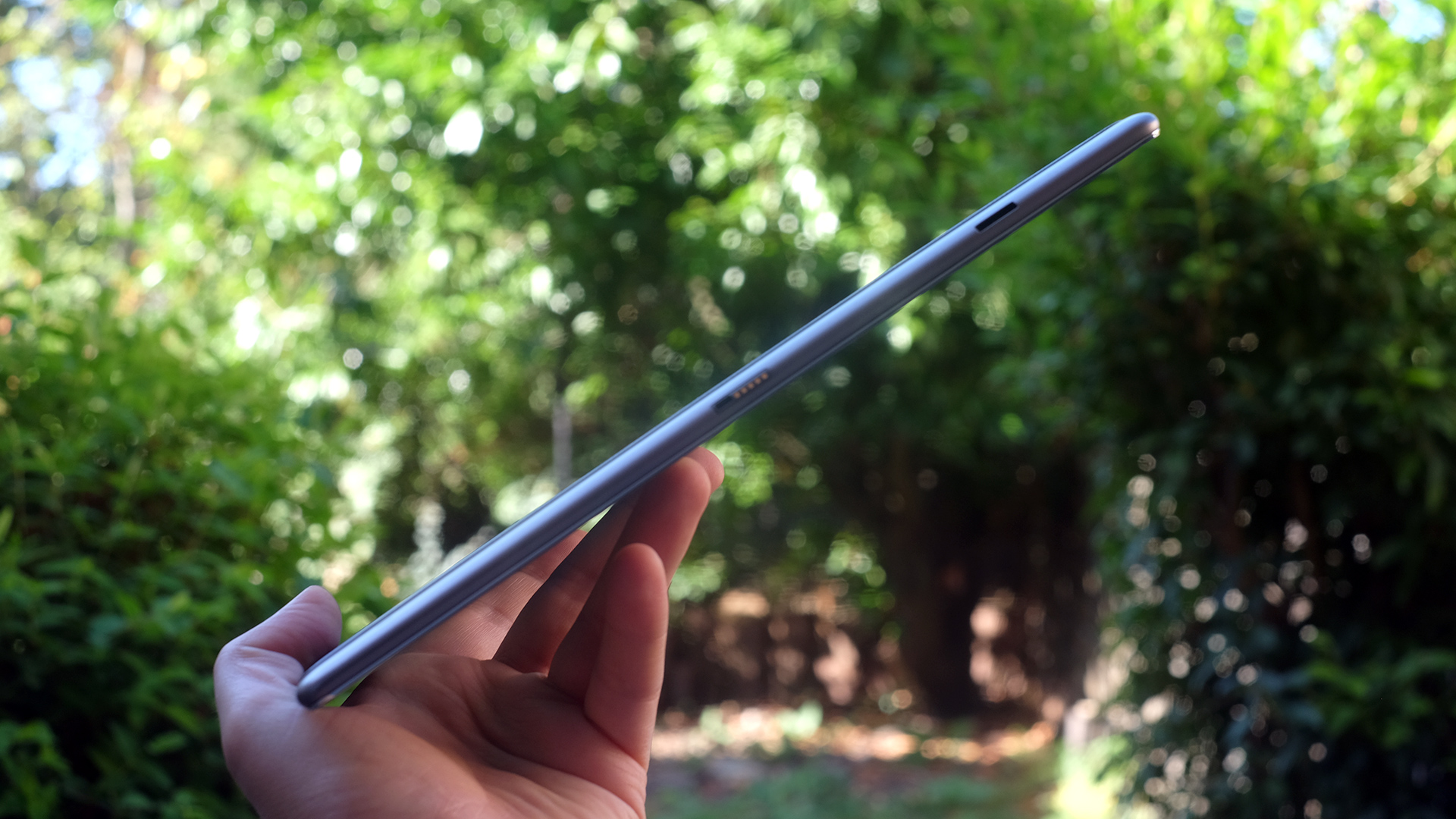
These days it's rare to see a truly poorly-made gadget, but we always have to check.
Internal storage depends on the country in which you buy the ZenPad 10 Z300M, but the UK version we're reviewing has 16GB. That's pretty generous for the price, and there's also a microSD card slot on one side to add more.
Display
- Low resolution
- Bright and colorful screen
The one piece of hardware that lets the Asus ZenPad 10 Z300M down is the screen, and only in one respect too, namely the resolution, which is dismal at 1280 x 800.
You can easily notice the difference between this sort of resolution and 1080p in a 5-inch phone, while in a 10-inch tablet the difference is painfully obvious. Text has a crunchy character, and 3D games appear far more pixelated than they do on a 1080p or higher tablet.
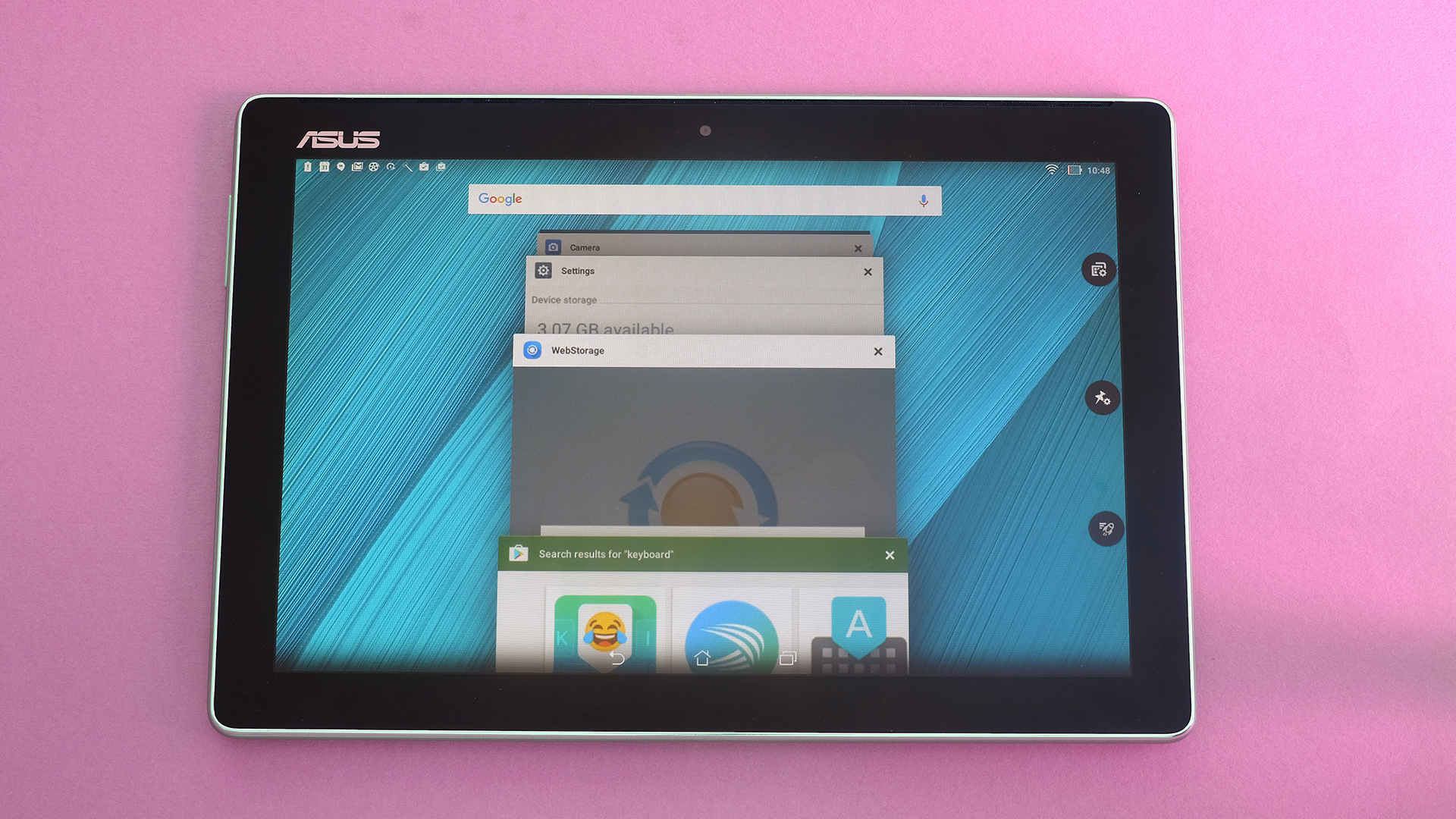
This isn't an "Asus thing". For just a little more money the Asus ZenPad S 8.0 has a 2048 x 1536 resolution - more than three times the number of display pixels as the Z300M. However, ultra-low resolution slates like this seem to be extremely hard to shake off thanks to the number of relatively undiscerning buyers who just want "a cheap tablet".
It's a shame, when a little extra consumer demand for higher quality might see more tablets like the minor classic LG G Pad 8.3 arrive at a low price.

Aside from the Minecraft-effect of the display, image quality is actually decent. Colors are bold enough to make media and games pop, contrast is good and the actual display doesn't appear recessed far beyond the top layer of the screen.
Viewing angles are good too, and top brightness is solid, so in many ways the ZenPad Z300M has a reasonable screen, it's just gagging for a 1920 x 1200 or higher resolution panel.
Andrew is a freelance journalist and has been writing and editing for some of the UK's top tech and lifestyle publications including TrustedReviews, Stuff, T3, TechRadar, Lifehacker and others.
